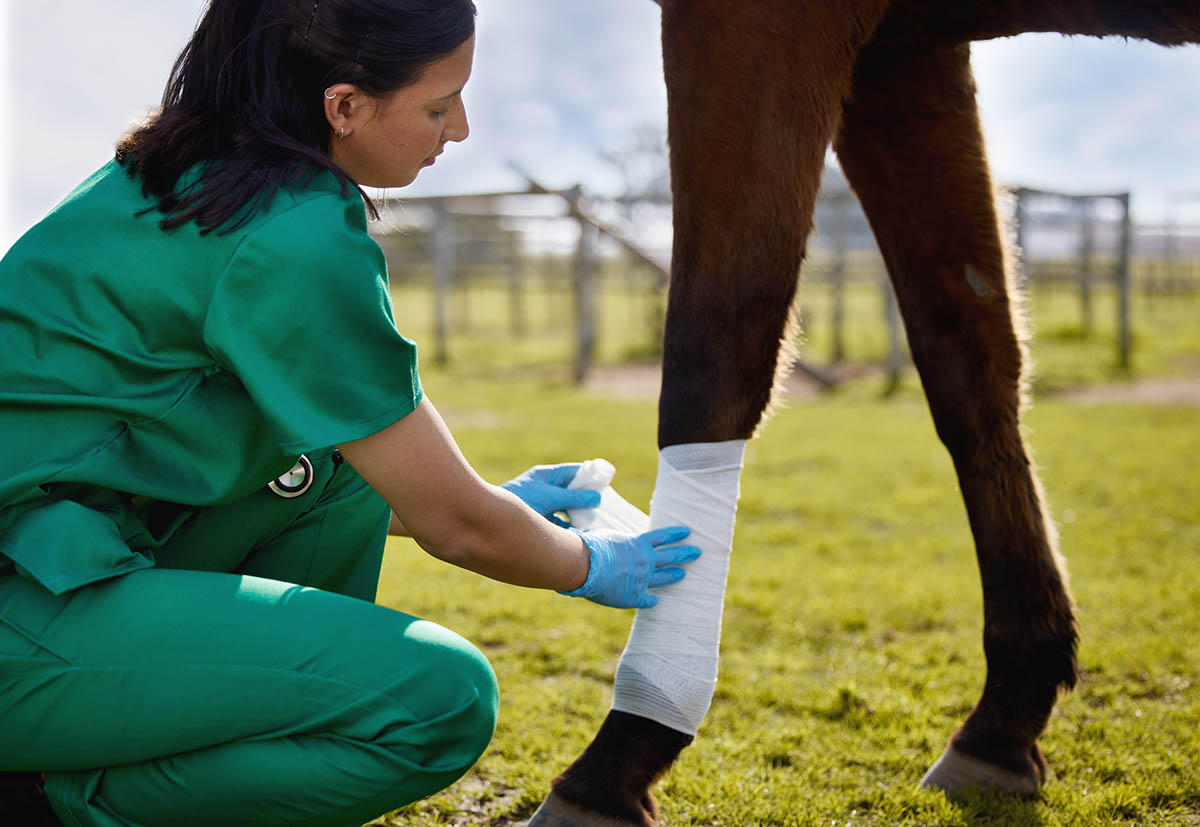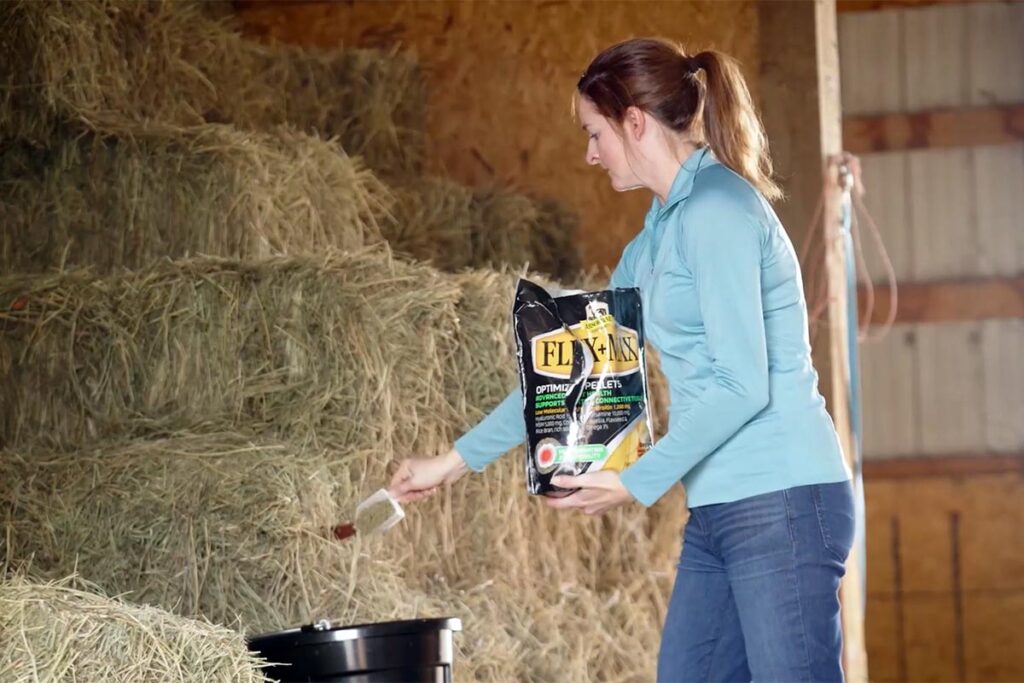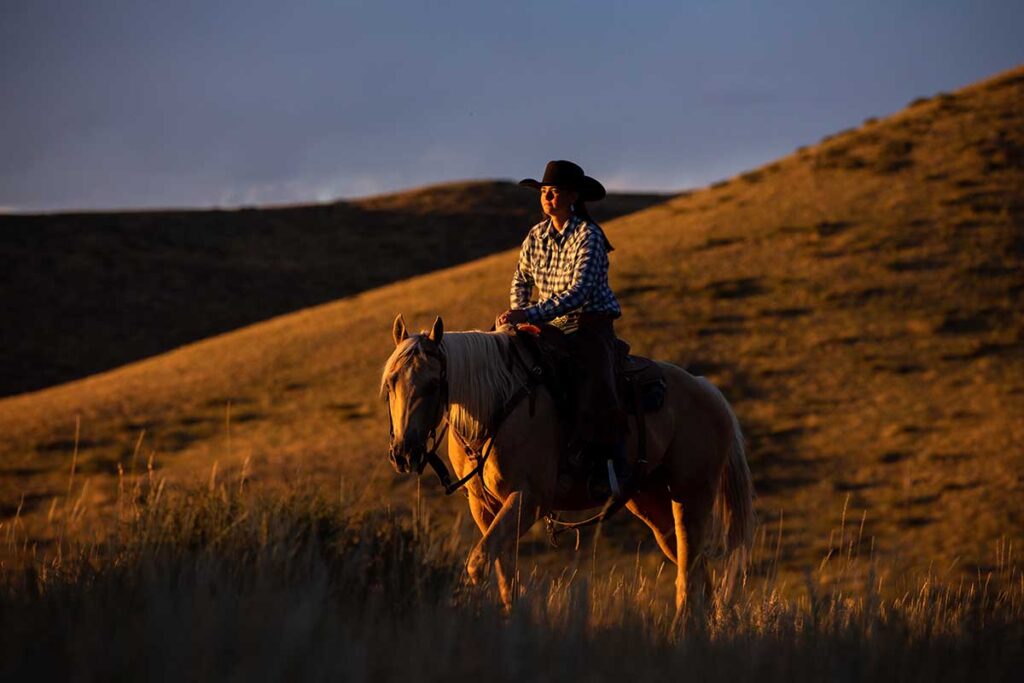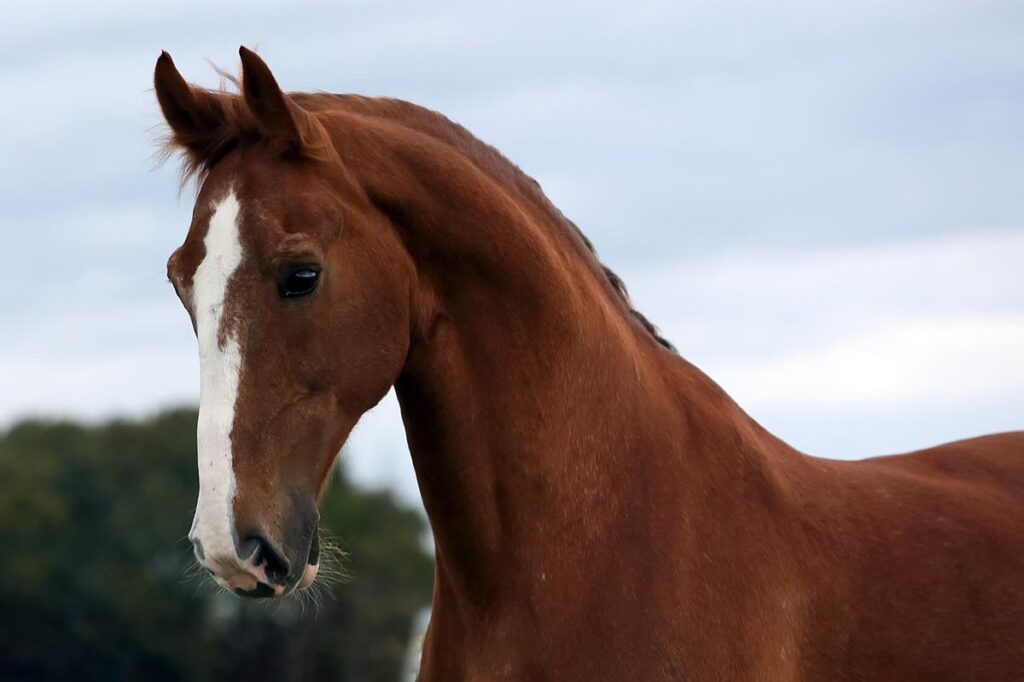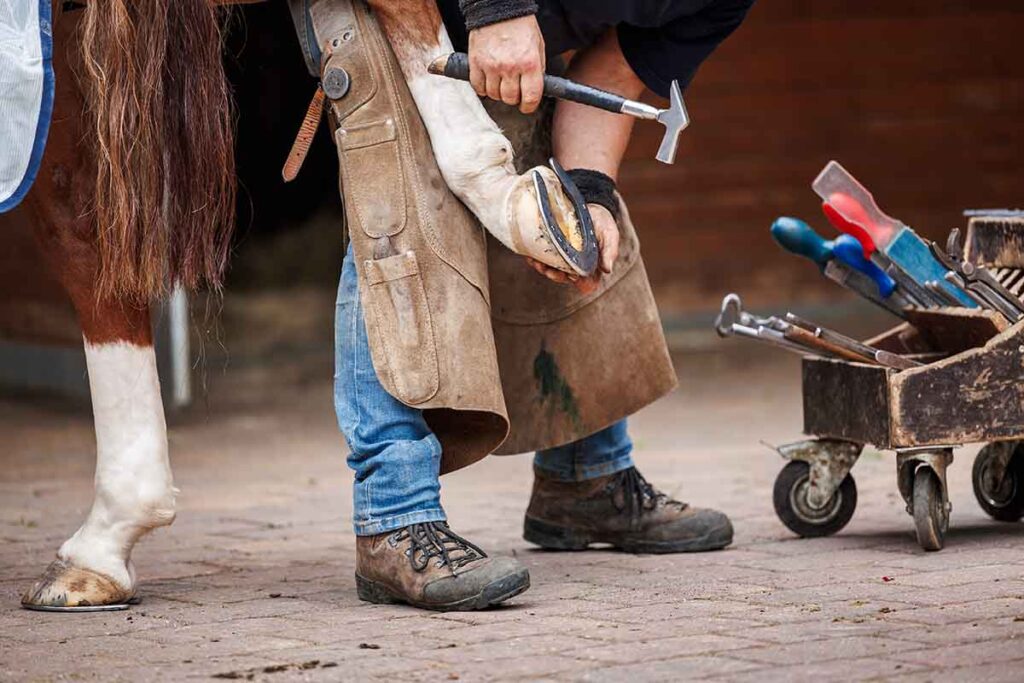It’s not a question of if but when you’ll find your horse with a wound needing attention. Wounds can be tricky—some that look tiny can have serious impacts, while others that look impossible to treat heal well with time. It just depends on what kind of wound you’re dealing with, where it’s located, and how you respond.
Wound Types and Locations on Horses
There are several kinds of cuts your horse can sustain:
- Abrasion—a scrape or a rub caused by friction (think “road rash”), which is generally superficial and doesn’t extend through the skin’s full thickness.
- Laceration—a deep cut or tearing of the full thickness of the skin.
- Puncture—A small hole caused by a pointy object, such as a stick or a nail. Punctures are generally deeper than they appear and frequently associated with kick wounds that otherwise seem superficial.
- Avulsions—A partial or complete tearing away of skin and tissue. Specifically, a degloving injury is a type of avulsion in which a section of skin is torn off from the underlying tissue completely, severing its blood supply.
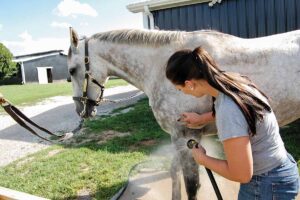
Unless the wound is a minor abrasion, it likely will require at least a call to your veterinarian. He or she might ask you to text or e-mail a photo of the wound to get a better idea of what you’re dealing with. Depending on what your vet sees, he’ll either give you treatment instructions or arrange to evaluate the wound in person. The latter is likely if the defect looks like it will require stitches, as fresh wounds are easiest for veterinarians to treat and, if necessary, suture and often have better outcomes than those left untreated or improperly treated.
The wound’s location is also important:
- Wounds near the eyes or eyelids are emergencies. Don’t try to treat these yourself. The eye itself could also be damaged (which your veterinarian needs to see to treat), and eyelid defects that don’t heal properly could lead to eye damage and even vision loss in the future.
- Wounds around joints require prompt evaluation and can have life-threatening consequences if not treated appropriately. Many synovial structures (which include joints, tendon sheaths, and bursae—fluid-filled structures encased by synovial membranes that produce lubricating fluid to allow the structure movement) are located near the skin surface, so even a superficial wound can introduce enough bacteria into the joint or tendon sheath to cause a severe infection days later. These infections can be difficult and expensive to treat and can prove fatal in some cases.
- Wounds that reach into the body cavity (for instance, if a horse is impaled by a stick or tree branch in the chest or abdominal cavity) also need immediate attention to prevent complications.
- Wounds on fleshy parts of the body (the hindquarters or neck, for example) tend to heal well with proper veterinary treatment.
- Leg wounds can be more challenging to deal with, as there’s less extra skin on the limbs to suture and because they’re subjected to frequent movement as the horse walks. Don’t wait and see what happens with limb wounds—get your veterinarian involved from the beginning for the best chance at a good clinical and cosmetic outcome.
What You (or Your Equine Vet) Should Do

If you’re dealing with a minor abrasion or cut or your veterinarian has determined it doesn’t need emergency care, steps to take can include:
- Clipping hair from around the wound to prevent contamination and make treatment easier. If your horse hasn’t been trained to accept clippers, is too worked up do clip safely, or you don’t know how to operate clippers, skip this step.
- Flushing the wound with water to remove dirt and debris. If need be, use gauze pads to remove debris, but do so gently: Aggressive scrubbing can drive contaminants farther into the wound or cause more damage to the skin and flesh, making the wound deeper and preventing healing.
- Cleaning it (again, gently) with an antiseptic, such as chlorhexidine surgical scrub or povidone iodine.
- Applying a topical ointment. There might be countless wound dressings in your local tack shop but stick with ones that don’t have the potential to do more harm than good. Some veterinarian-recommended examples include saline, silver sulfadiazine cream and/or dressing, and triple antibiotic ointment—the same product you can buy in any pharmacy or grocery store.
- Protecting it with a bandage, if needed. Ask your veterinarian to show you how to apply a wrap before your horse needs one, because improperly applied bandages or wraps can result in injury. If you don’t know how to wrap your horse’s legs, but he needs a bandage, ask an experienced horse owner or trainer for help. Your veterinarian can instruct you how long to keep the horse’s wound wrapped before transitioning to simply applying a topical dressing.
If your veterinarian comes to evaluate a wound, some examination and treatment steps he or she might take include:
- Sedating the horse to ensure proper cleaning and dressing;
- Cleaning and debriding the wound thoroughly;
- Diagnostic imaging (e.g., X-ray or ultrasound to identify potential related bone fractures, soft-tissue injuries, or foreign bodies;
- Suturing the wound, if appropriate (some wounds—even fresh ones—can’t be sutured);
- Inserting drains, if necessary, to prevent fluid buildup as the wound heals;
- Applying a splint to leg injuries that require immobilization to heal;
- Determining if your horse needs a tetanus or botulism vaccine booster; and
- Prescribing medications, such as non-steroidal anti-inflammatory drugs and/or antibiotics, if necessary.
Your veterinarian will likely return for several follow-up visits to ensure the wound is healing properly and to keep treatment moving forward.
Other Points to Remember
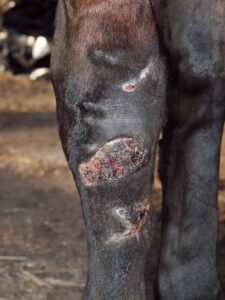
Wound healing’s archrival is movement. The more a laceration moves (for example, when the horse walks around or lowers his head to the ground), the harder it is for it to heal properly. As such, your veterinarian might recommend keeping your horse on stall rest at least through the initial healing period. Be prepared for this possibility and, if you have questions or concerns about it, ask your veterinarian at the initial wound-care visit.
A common wound-healing complication is excess proud flesh development. Technically called exuberant granulation tissue, proud flesh is part of the horse’s normal wound-healing response. Granulation tissue is the pebbly or granular-looking tissue that can develop in healing wounds anywhere on the horse’s body. It’s a good thing for open wounds because it:
- Helps the open wound resist infection.
- As it fills the healing wound, it provides a surface for the epithelial (skin) cells on the periphery of the wound to “crawl” over and help cover the wound.
- Helps the wound contract or become smaller.
However, there can be problems when the horse develops too much granulation tissue. In some cases so much proud flesh can develop that it resembles a tumor, usually obliterating the original wound. Granulation tissue in this excessively exuberant form usually occurs in lower limb wounds and is very difficult to manage. In fact, in some cases, veterinarians must remove the excessive granulation tissue surgically and essentially start a new healing process.
The good news: Proper wound care can help prevent excessive proud flesh and, if it’s caught early, veterinarians can usually manage it in a less invasive manner.
At any point, if a wound doesn’t seem to be healing properly or is developing proud flesh, seek your veterinarian’s advice.
Related Video: How To Clean and Treat Horse Wounds
Are you enjoying this content? Sign up for My New Horse’s FREE newsletter to get the latest horse owner info and fun facts delivered straight to your inbox!

